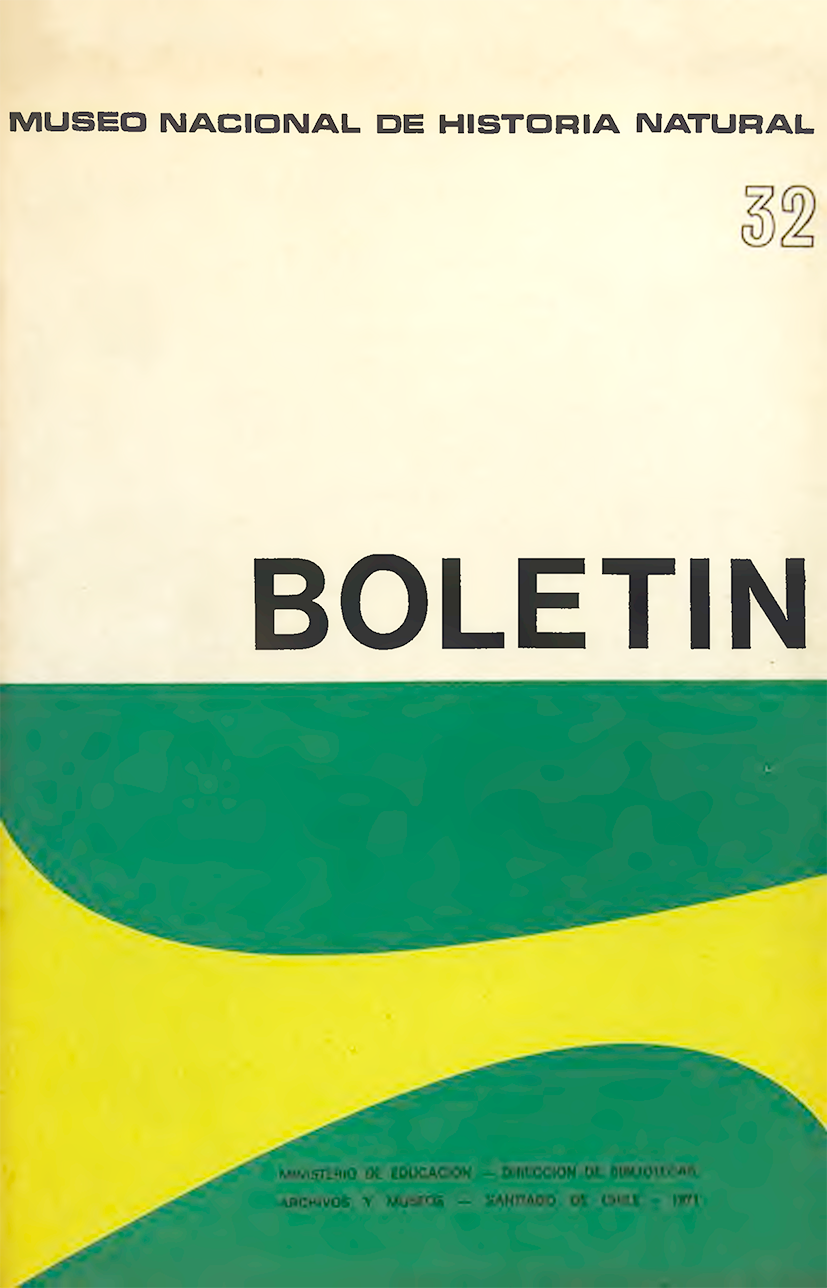Colonización por organismos edáficos de territorios desérticos sometidos a riego (Estancia Castilla, Provincia de Atacama, Chile)
DOI:
https://doi.org/10.54830/bmnhn.v32.1971.548Resumen
Una gran parte del territorio chileno tiene un clima de características áridas o semiáridas (Comité Chileno para el Estudio de las Zonas Áridas 1963, di Castri 1968 a, di Castri & H a je k 1970). Por otro lado, en estas regiones áridas las condiciones térmicas suelen ser favorables y existen suelos potencialmente aptos para una explotación agrícola. El factor limitante principal es entonces el agua y, en segundo término, la carencia de substancias orgánicas. Ambos factores pueden ser superados mediante un buen uso de las aguas, sobre todo de las subterráneas que son abundantes en las zonas áridas de Chile, y siguiendo principios de la así llamada agricultura de desierto (Evenari & Koller 1956). Por lo demás, las regiones áridas constituyen mundialmente una de las mayores "esperanzas" para incrementar las disponibilidades alimenticias de la humanidad. En este sentido, destacamos el Proyecto Mayor sobre Zonas Áridas desarrollado por la UNESCO (White 1960). Sin embargo, cabe admitir que también las decepciones derivadas del uso de los territorios áridos han sido muy numerosas. Estas decepciones se han originado en gran medida por los siguientes inconvenientes; algunos, de tipo económico, derivados del elevado costo que presume la puesta en marcha y el desarrollo de un programa de agricultura de desierto; otros, de naturaleza edáfica, ocasionados por la salinización progresiva y el aumento de la erosión de muchos suelos desérticos después de unos pocos años de prácticas agrícolas. Desde un punto de vista biológico, la irrigación implica un enorme cambio para los organismos que viven en los suelos desérticos. El tipo de presión selectiva a que están sometidos es totalmente distinto y, por lo general, se llega a una sustitución total de la fauna y en parte también de la microflora autóctonas por especies plásticas introducidas. Ya hemos estudiado en Chile algunos aspectos de la fauna edáfica de terrenos regados, en comparación con aquella de los suelos naturales de la zona correspondiente; en la puna del Norte Grande (di Castri et al . 1970 b), en el Norte Chico (Covarrubias e t a l . 1964 y 1970) y en la Zona Central (di Castri 1963, H a je k e t a l. 1967, di C a stri & Covarrubias 1970). El tema ha sido objeto también de dos trabajos de síntesis (di Castri 1966 y 1968 b). El propósito de la siguiente investigación ha sido considerar las modificaciones producidas por el riego en las comunidades del suelo en una zona anteriormente de desierto absoluto, en que es posible definir con exactitud la historia de los terrenos cultivados desde el momento en que se iniciaron las prácticas de riego con aguas subterráneas. Pueden así seguirse las distintas etapas de la colonización en suelos desérticos, una vez desaparecido por efecto del riego el principal factor limitante.
Descargas
Descargas
Publicado
Cómo citar
Número
Sección
Licencia

Esta obra está bajo una licencia internacional Creative Commons Atribución-NoComercial-SinDerivadas 4.0.




